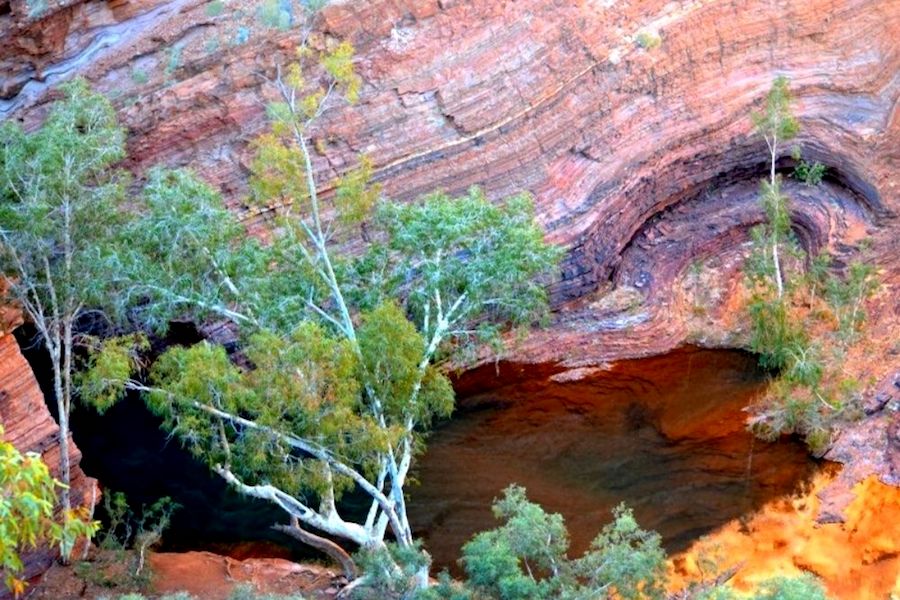Global S&T Development Trend Analysis Platform of Resources and Environment
| Rio kept destruction of Ice Age Australia heritage secret, Aboriginal group says | |
| admin | |
| 2021-06-25 | |
| 发布年 | 2021 |
| 语种 | 英语 |
| 国家 | 国际 |
| 领域 | 地球科学 |
| 正文(英文) |  Aboriginal site in Australia. (Image courtesy of Wintawari Guruma Aboriginal Corporation)
A Rio Tinto Ltd forerunner failed to protect 18,000-year-old artefacts showing how people lived during the last Ice Age, part of destruction that the mining giant kept secret for decades, an Australian Aboriginal group alleged on Friday. The group said that Rio, despite pledges to improve how it protects Indigenous heritage after its destruction of sacred sites last year, did not come clean about the 1990s destruction of heritage at an iron ore mine that local Aboriginal people still do not have access to. Australian mining “is an industry that hasn’t behaved responsibly and an industry that needs far greater oversight in heritage protection and agreement making,” the Wintawari Guruma Aboriginal Corporation (WGAC) said in a statement. The troubled relationship between mining, a core industry for Australia’s economy, and the nation’s Aboriginal heritage attracted global attention last year when Rio, with state approval, blew up two ancient rock shelters considered sacred to Indigenous people in Western Australia. Outrage at the legal destruction featured in Black Lives Matter protests in a country where Aboriginal people have long suffered higher rates of imprisonment, unemployment and lower life expectancy.
The furore led Rio to replace top executives and promise to overhaul its heritage protection practices. Friday’s claims, in a submission to a government inquiry, concern different sites in the same region, around the Marandoo iron ore mine. The group said it had learned that material dating back at least 18,000 years and other artefacts had been thrown in a Darwin rubbish heap. Rio Tinto Iron Ore chief executive Simon Trott said in a statement: “We’re not proud of many parts of our history at Marandoo and we reiterate our apology to the Traditional Owners of the land, the Eastern Guruma People, for our past actions. We know we have a lot of work ahead to right some of these historical wrongs, which fell well short of the standards we expect today.” Trott’s statement did not address the Indigenous group’s specific allegations. Rio declined to comment beyond the statement. The Aboriginal group’s submission highlights an Australian legal structure that has long greenlighted mining development at the expense of historically important cultural sites. “Any site dating from the last Ice Age is significant because people were using these sites as refuges, so we can get a sense of how they were reacting to glacial conditions,” said Duncan Wright, a specialist in Indigenous archaeology at Australian National University. “If you had sites of this significance in England, they would be protected – it’s like destroying Stonehenge,” said Wright, who has not seen the material. The sites could, in fact, have been significantly older, given the technology available in the 1990s, he said. Heritage “in the bin”Hamersley Iron Pty Ltd and the Western Australia state government knew by May 1992 “that rock shelter ‘MG2’ in Manganese Gorge contained Aboriginal cultural material dating back 18,000 years,” the first evidence of Aboriginal habitation through the Ice Age, WGAC said in the submission. Rio acquired Hamersley in 2001. Material from that rock shelter was accidentally dumped in landfill, and Hamersley later approved plans to discard unanalysed material from 20 of 28 sites that were salvaged, it said. “It is a wound that has not healed – that so many cultural sites were lost, blasted into fragments, without even a record, note or photograph kept,” the group said. “Nothing remains today beyond a deep hole in the ground.” The group said this contravened state regulations requiring the miner to safeguard salvaged material, part of an arrangement that exempts Rio from complying with state heritage laws. Indigenous groups have mounted opposition to state government revisions of heritage protection laws that have legalised the destruction of ancient sites. Trott said Rio also supports repealing the law that created the exemption, the Marandoo Act 1992, and that “discussions with Traditional Owner groups to better understand and reflect their wishes are ongoing.” The Aboriginal group said artefacts in early reports had included grinding material, hearths, marine shell, bone, stone and wooden items from an area that contained numerous rock shelters, a ceremonial area and a waterhole with engravings. “So little was the respect for either the State’s conditions, or for the cultural heritage that was destroyed on a massive scale, hundreds of Eastern Guruma cultural artefacts ended up in the bin,” it said. The group noted reports of vandalism at the M2 rock shelter, including a drill rig putting a hole through its roof. WGAC said they remain unable to assess the heritage at Marandoo that is not included in their legal native title claim, and that Rio does not pay royalties on the three oldest of its six mines on its ancestral land. “It is not surprising that this sort of behaviour occurred in Western Australia, some 28 years before Juukan Gorge,” the area of last year’s destruction, the WGAC board in a statement. (By Melanie Burton; Editing by William Mallard) |
| URL | 查看原文 |
| 来源平台 | Minging.com |
| 文献类型 | 新闻 |
| 条目标识符 | http://119.78.100.173/C666/handle/2XK7JSWQ/331017 |
| 专题 | 地球科学 |
| 推荐引用方式 GB/T 7714 | admin. Rio kept destruction of Ice Age Australia heritage secret, Aboriginal group says. 2021. |
| 条目包含的文件 | 条目无相关文件。 | |||||
| 个性服务 |
| 推荐该条目 |
| 保存到收藏夹 |
| 查看访问统计 |
| 导出为Endnote文件 |
| 谷歌学术 |
| 谷歌学术中相似的文章 |
| [admin]的文章 |
| 百度学术 |
| 百度学术中相似的文章 |
| [admin]的文章 |
| 必应学术 |
| 必应学术中相似的文章 |
| [admin]的文章 |
| 相关权益政策 |
| 暂无数据 |
| 收藏/分享 |
除非特别说明,本系统中所有内容都受版权保护,并保留所有权利。
修改评论